By Jim Sorensen
After spending a real short night in Addis, the group set out for our trip to Gondar at 5:15 AM. Upon landing in Gondar, we made our way to the Goha Hotel which was built during the time of Haile Selassie.
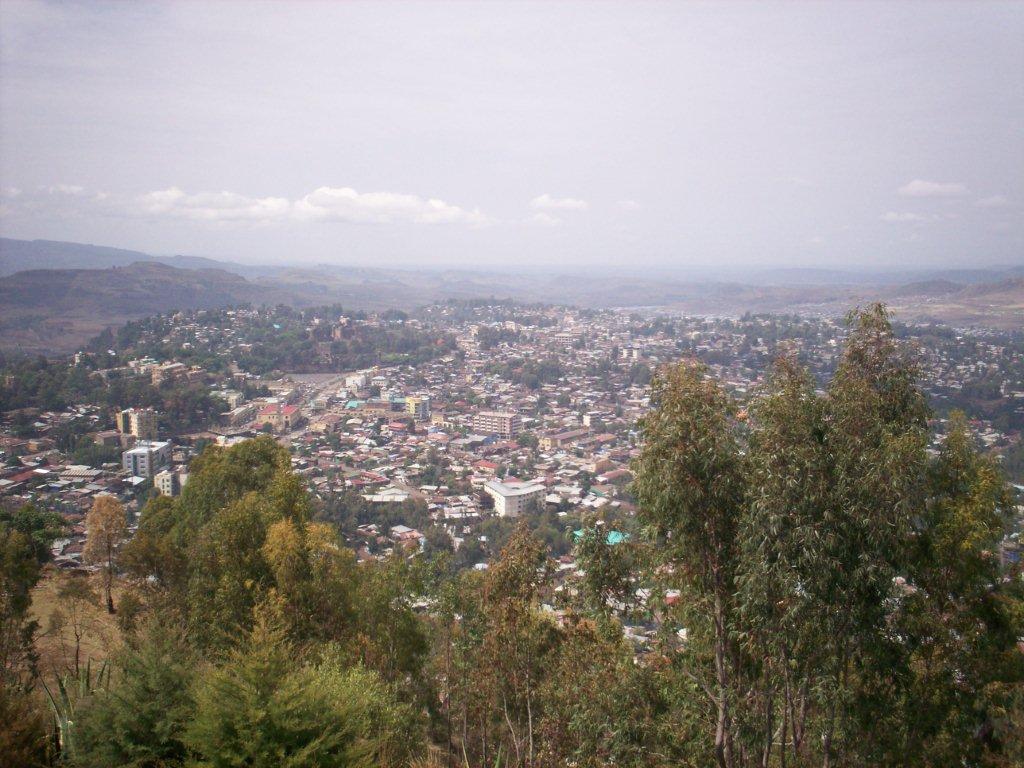
The Goha is at the top of a high hill and overlooks the city with a beautiful view of the surrounding area. Gondar is also home of Gondar University, one of the largest in Ethiopia and home of a well know medical school.
Gondar was founded in 1636 by King Fasilides and it served as the capitol of Ethiopia, for a period of over 150 years, when 11 Catholic kings ruled over Ethiopia. These 11 kings constructed 6 castles in the Gondar compound.
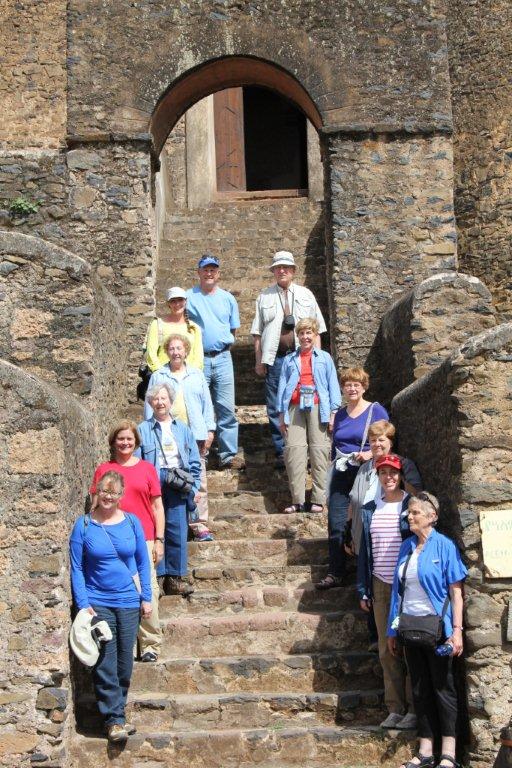
The Portuguese were a part of the history of the Catholic Christians in early Ethiopia, and so, their influence is seen in the castles we visited in the afternoon. One of the entrances to a castle found us posing for a group picture.
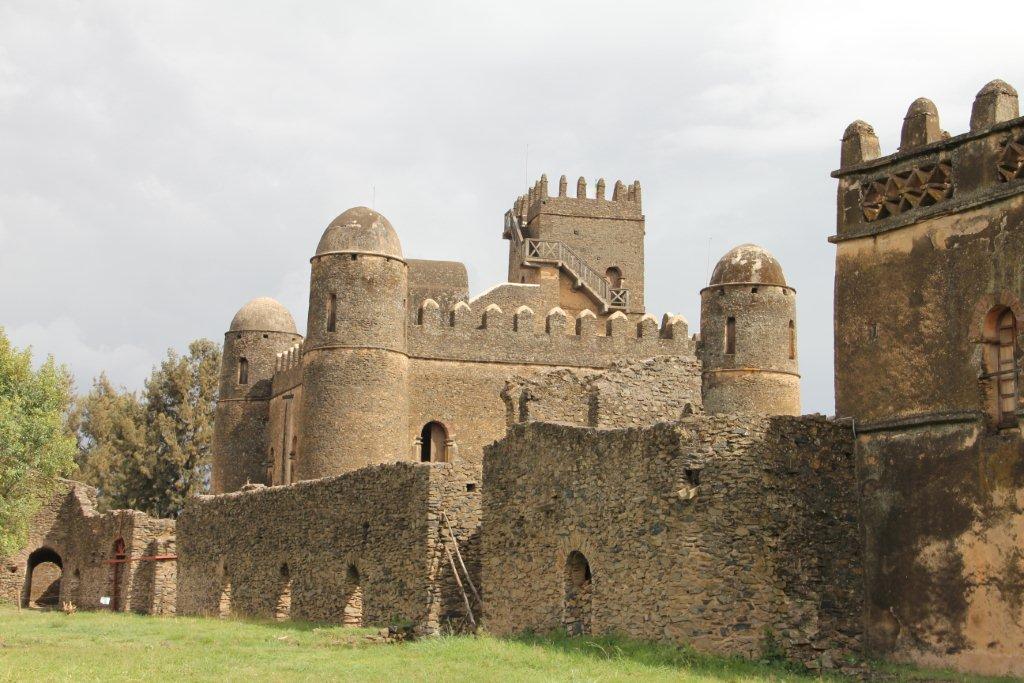
Some of the castles are five stories high. The compound includes a dance hall, library, stables, and an archive. King Fasilides, and many of the other rulers, including Haile Selassie, kept lions in the castle compound as a show of power and to drive off evil spirits.
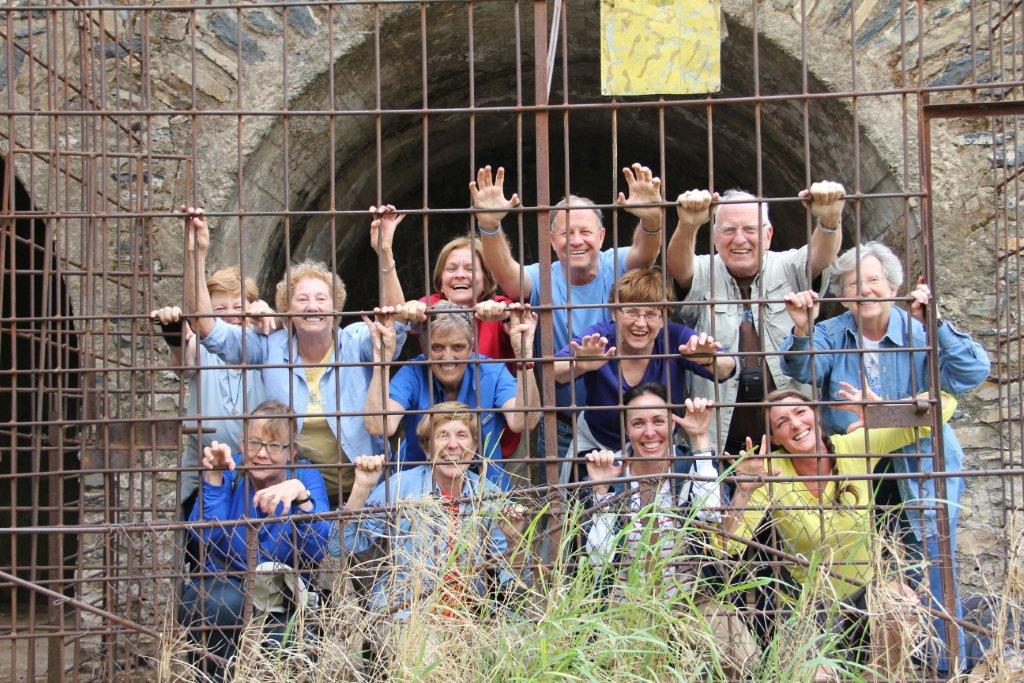
As we toured the compound, we didn’t find any lions, but a strange wild breed of animals called “Americanas Touristas”, which fortunately, were securely behind bars in the lion’s den.
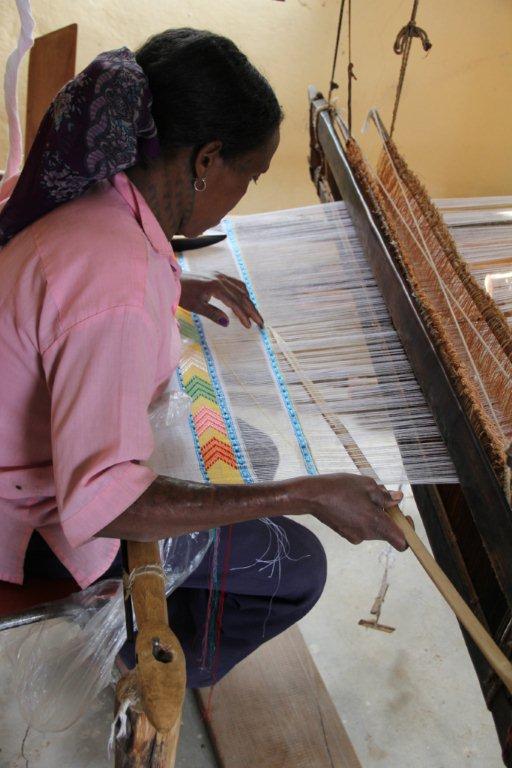
After visiting the castles (and releasing the Americanas Touristas!), we went to the Ploughshare Women’s Cooperative just outside Gondar. Here, women who are widowed or who have no husbands can learn trades and make money to support their families and become self-sufficient. Their cloths are beautiful, as well as their pottery and other hand-made articles.
We ended the day by having devotions in King Fasilides’ Bath. This bath is known for its celebration of baptism, called Timket in Amharic, which is held on three days every year, culminating on January 19th. They flood the huge bath with water from a nearby river, and after a blessing by the priests, people jump in the water to commemorate their own baptisms. The devotion was about baptism, so it was a perfect spot to ponder and pray about the spiritual and physical blessing of water.
By Jim Sorensen
After spending a real short night in Addis, the group set out for our trip to Gondar at 5:15 AM. Upon landing in Gondar, we made our way to the Goha Hotel which was built during the time of Haile Selassie.

The Goha is at the top of a high hill and overlooks the city with a beautiful view of the surrounding area. Gondar is also home of Gondar University, one of the largest in Ethiopia and home of a well know medical school.
Gondar was founded in 1636 by King Fasilides and it served as the capitol of Ethiopia, for a period of over 150 years, when 11 Catholic kings ruled over Ethiopia. These 11 kings constructed 6 castles in the Gondar compound.

The Portuguese were a part of the history of the Catholic Christians in early Ethiopia, and so, their influence is seen in the castles we visited in the afternoon. One of the entrances to a castle found us posing for a group picture.

Some of the castles are five stories high. The compound includes a dance hall, library, stables, and an archive. King Fasilides, and many of the other rulers, including Haile Selassie, kept lions in the castle compound as a show of power and to drive off evil spirits.

As we toured the compound, we didn’t find any lions, but a strange wild breed of animals called “Americanas Touristas”, which fortunately, were securely behind bars in the lion’s den.

After visiting the castles (and releasing the Americanas Touristas!), we went to the Ploughshare Women’s Cooperative just outside Gondar. Here, women who are widowed or who have no husbands can learn trades and make money to support their families and become self-sufficient. Their cloths are beautiful, as well as their pottery and other hand-made articles.
We ended the day by having devotions in King Fasilides’ Bath. This bath is known for its celebration of baptism, called Timket in Amharic, which is held on three days every year, culminating on January 19th. They flood the huge bath with water from a nearby river, and after a blessing by the priests, people jump in the water to commemorate their own baptisms. The devotion was about baptism, so it was a perfect spot to ponder and pray about the spiritual and physical blessing of water.

About The Author: Meredith
More posts by Meredith